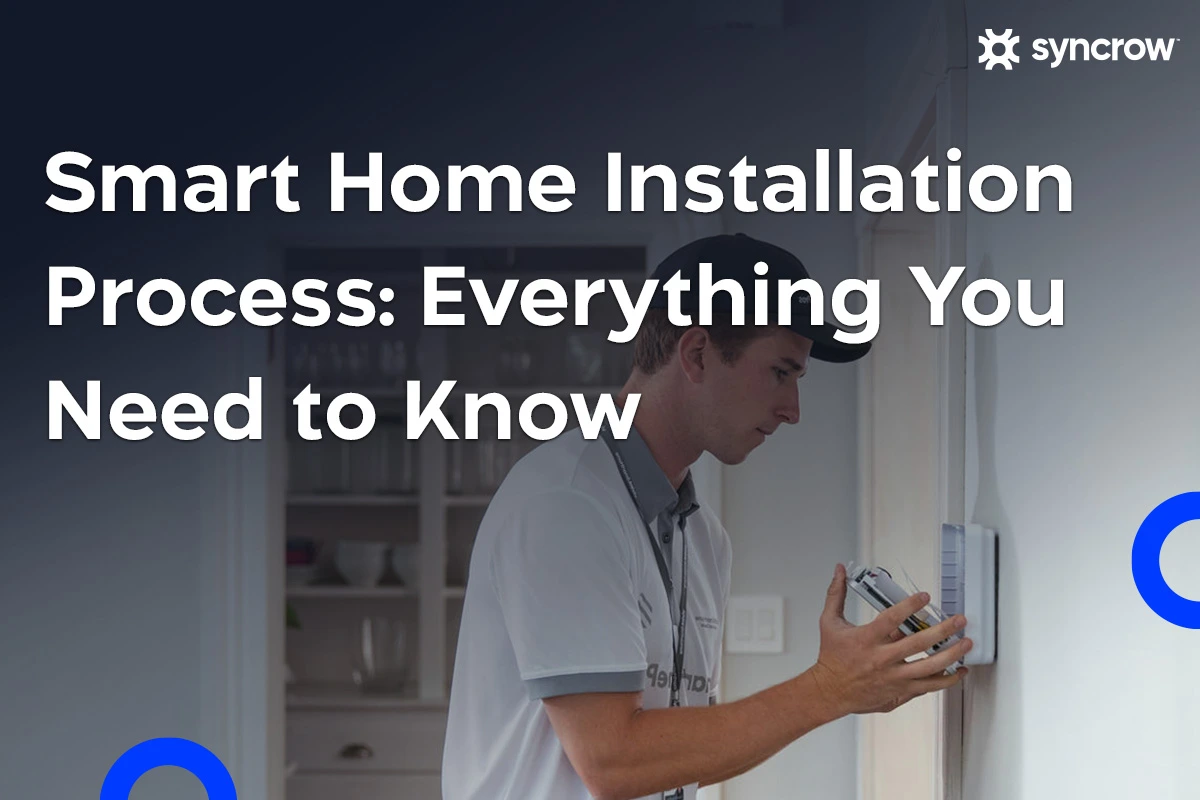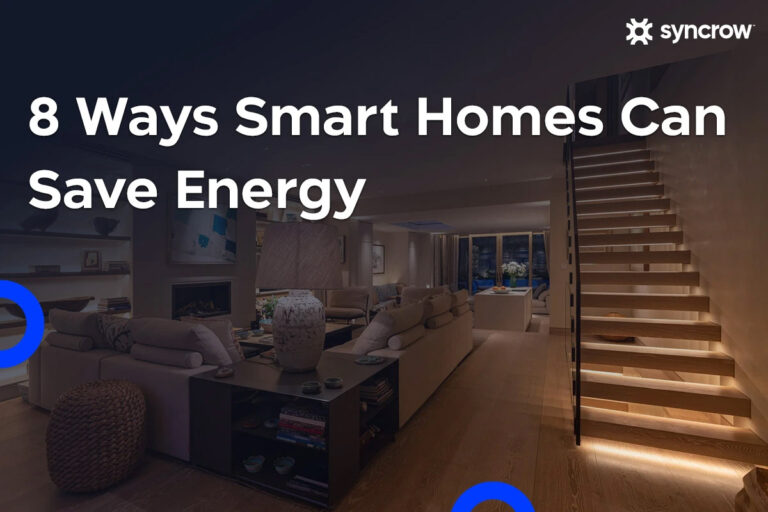Imagine being able to use your phone to unlock your front door, enter your house, have the lights come on automatically, and request the assistance of your virtual assistant to make you a cup of coffee. When you’re not home, a robot vacuum will clean the space, a smart thermostat will turn down the heat or air conditioning to save money, and you can keep an eye on everything with indoor and outdoor security cameras right from your phone.
It’s an area that anticipates your needs and gives you the control you need to customise your surroundings. Your life can be made easier and more convenient by combining the appropriate setup and device combinations. The smart-home market can be overwhelming when you aren’t sure of what your space needs, but with Syncrow, you are able to understand your options and the implications of your decisions. Read on to discover the smart-home guide you need to get started.
What Is A Smart Home?
A smart home is a building that makes use of internet-connected gadgets to enable remote control of systems and appliances like lighting and heating. By enabling homeowners to control smart devices, frequently through a smart home app on their smartphone or other networked devices, smart home technology, also known as home automation, offers them security, comfort, convenience, and energy efficiency. Smart home systems and gadgets, which are a part of the internet of things (IoT), frequently work together, exchanging information about consumer usage and automating tasks in accordance with the preferences of the homeowners.
Steps To Smart Automate Your Home With Syncrow
With Syncrow’s smart automation services, you can modernise your space and gain the convenience of improved security, safety, and energy efficiency from a single hub. Here are the steps you need to take to contact us and begin the home automation process.
- Fill out the form on our website if smart home automation is something that you are interested in.
- A member of our team will contact you to learn more about your concern and make recommendations for the best courses of action in light of your requirements for smart home automation.
- Schedule an appointment to begin installing your smart home automation system.
- Our technician will visit you and begin the installation process as soon as the appointment is confirmed.
The Internet of Things will enable your smart home to learn your patterns and respond to your needs without having to do anything in the future. Once you smart automate your home, connecting appliances, thermostats, kettles, TVs, and lighting to each other and the internet provides you with an extra layer of convenience today. The data that each device gathers, which a controller in our home can analyse and respond to, will be the key to transforming an automated home from a simple collection of remote-controlled gadgets and gizmos into a truly “smart” home. One that facilitates simpler daily living aids in conserving precious resources used in your home, such as water and energy, and links it to the larger Internet of Things to enable genuinely exciting advancements for our planet.
The Installation Process
It can sometimes seem challenging to construct the ideal smart home automation system. Goals to review designs, installation schedules, and finding the right company to work with in the long run are all very typical concerns. To ensure that you receive the best experience and education for all of your new purchases, our installation professionals at Syncrow are well-trained with all of the products we carry. Our programmers can create layouts and functions that are specifically tailored to your needs and are fully qualified. By taking on responsibility for the internal programming as well, we can achieve the highest quality standard that we have set for ourselves.

The following are the steps we follow when installing your smart home devices;
1. Turn off the power
It’s critical that the power be turned off at the switch at the circuit breaker box before installing any smart devices. Since smart homes depend on power, each appliance or device that uses power must have the proper wiring in order to operate.
2. Dismantle the light switch on the wall and remove it
Test the existing switch by turning it on and off after shutting off the electricity at the circuit breaker. It shouldn’t switch on. The old switch is taken out by unscrewing it and pulling the wall plate and switch apart.
3. Inspect the cables
A voltage tester is applied to the exposed black wire to confirm the power is off before separating the wires. To prevent wires from getting confused about the wires, electrical tape and sharpie are used to identify and label each wire.
4. Connecting the cables to the device
By lining up each wire on your switch with its corresponding partner on your wall, you can connect and disconnect the wires from the old switch. Wire nuts are used to secure the twisted-together wires, trim the excess wire, and join the wires on the wall and switches.
5. Do the necessary fixes and turn on the electricity
The switch box is then carefully refilled with the wires. The power is turned back on to verify that the installation procedure was successful after the switch cover has been firmly placed in position.
6. Start the pairing process
The electrical system in your home must be wired with smart switches in order to regulate the power flow to each switch. You can control them with a smartphone app or central hub because they are Zigbee enabled and connected to your home network.
What Will The House Look Like?
Home automation offers homeowners peace of mind by enabling them to remotely monitor their properties and thwart threats like a forgotten coffee maker left on or an unlocked front door. Elderly people can benefit from domotics as well because they can be monitored, allowing them to stay at home comfortably and safely rather than having to move into a nursing home or hire a carer round-the-clock.
Users’ preferences can be accommodated in smart homes for convenience. For instance, users can set their garage door to open, lights to turn on, fireplace to light, and favourite music to play when they get home. Consumers can increase efficiency by using home automation. A smart home system can learn habits and ensure that the house is cooled down by the time owners get home from work instead of turning on the air conditioning throughout the day. The same holds true for appliances. The lawn will only be watered when necessary and with the exact amount of water required with a smart irrigation system. Home automation makes it possible to use energy, water, and other resources more effectively, which helps consumers save money and natural resources.
To Conclude
There’s no reason it should be difficult to start your journey with smart home improvement. Finding a single location to handle all of your smart home needs would therefore be ideal. To ensure a first-rate end-user experience, we at Syncrow offer customised smart automation services. By specifying only those products that match the client’s needs, we ensure that our clients receive the best value possible by utilising a specially built system. The highest quality customer service is our team’s top priority. Get in touch with us to get started!




